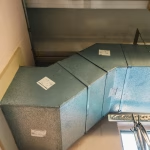Metal Bending machines come in all sizes and types. They may be as simple as a finger brake or as complex as a press brake. Technology, as in so many other industries also has an effect on the operation of these systems. Automation has come to the metal bending machine industry. CNC equipment is seizing control over various metal bending tools. Yet, there is still market for dedicated manual metal bending tools, particularly in the tube industry. The reasons are various and are provided in the article below.
Defining Dedicated Manual Metal Bending
Manual bending is self-explanatory. It indicates the process is performed manually or by-hand. A person must be physically involved in some way. This may require pushing a button, placing materials or being responsible for the bending in some way that does not involve programmable controls.
Manual is the opposite of power or Computer Numerical Control or CNC. These machines are computerized control systems. By punching in data and other pertinent information, they perform the bending or other processes automatically in a specified fashion or pattern.
Dedicated is the opposite of versatile. It indicates the system is committed to one specific type of bending. It will only perform its function in this one manner. It cannot, for example, in the case of metal tubes, be adjusted to accept any other shape.
Advantages of Dedicated Manual Metal Bending Tools
Manual tools of various types can be automated. Metal bending tools, even dedicated ones, can comply with CNC controls to produce a hybrid or a fully automated bending machine. Yet, while this may seem a good option, it may not always be the best one. Dedicated manual bending metal equipment does have advantages over its automated counterparts including:
- A Fast Setup: As is the case with all setups, experience with the machinery will improve the setup time over time. Familiarity with the machine and the process will increase setup time and result in faster cycle times than initially
- Rapid Cycle Times – often actually faster than CNC benders, although such factors as shape complexity may reduce the disparity between the two piece of equipment somewhat
- Consistency – the parts produced and reproduced are consistent in quality and shape
- Training – the dedicated manual machines are easy to operate. Except for a few minor issues, a company can instruct and train an operator with ease fairly quickly
As is the case with any piece of equipment, automated or not, much depends upon the capabilities of the operator or the individual behind coordinating and putting in the data.
Metal Bending Tools
While companies tend to see automation and computerization as the way to go to increase production, this is not always the case. CNC equipment is not always capable of providing the right type of bends. Such machinery may not even be able to complete them in the way demanded. When this occurs, the only means of providing the perfect bend is to use manual finish-up metal bending tools.








